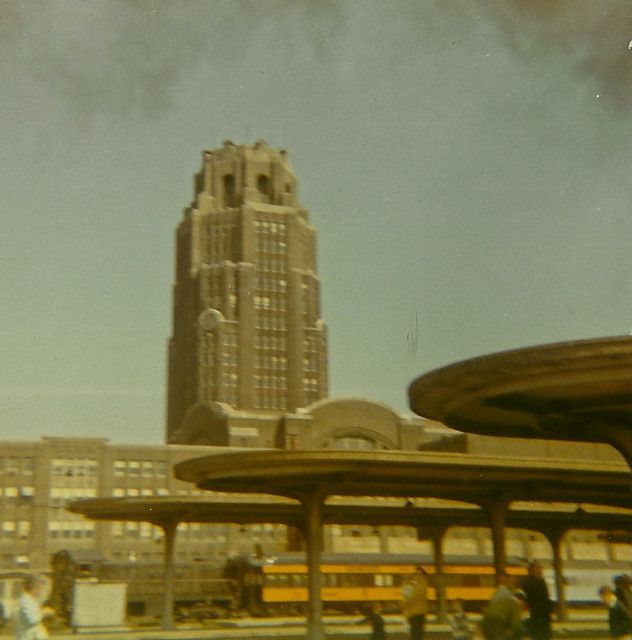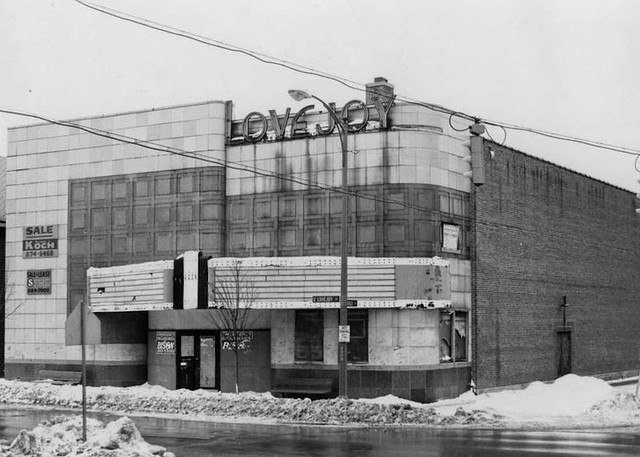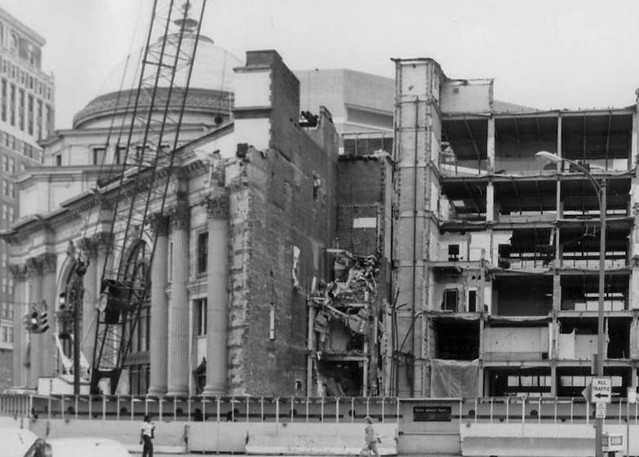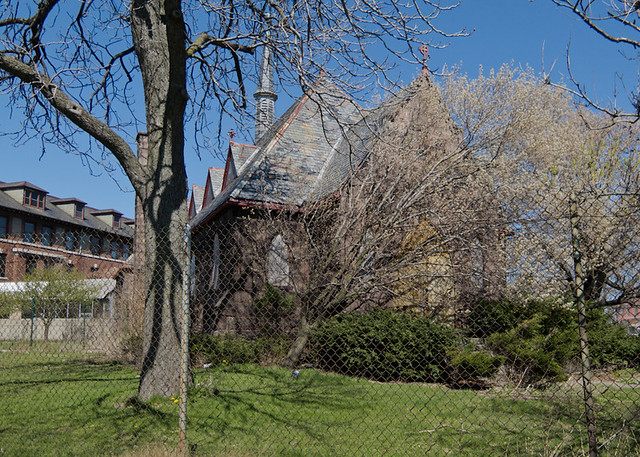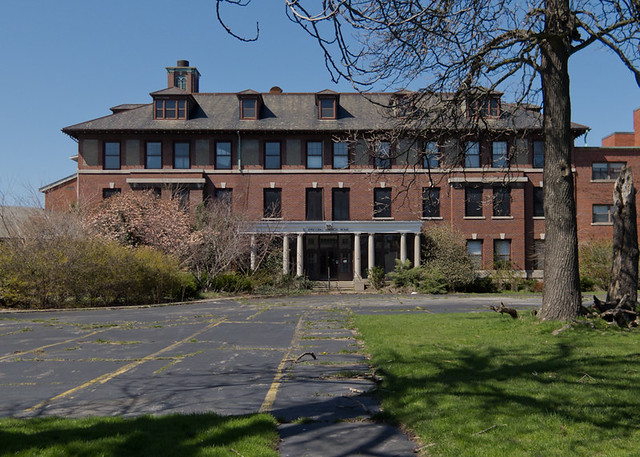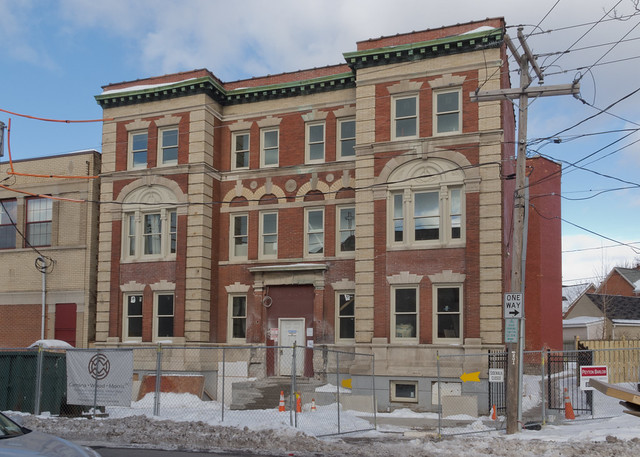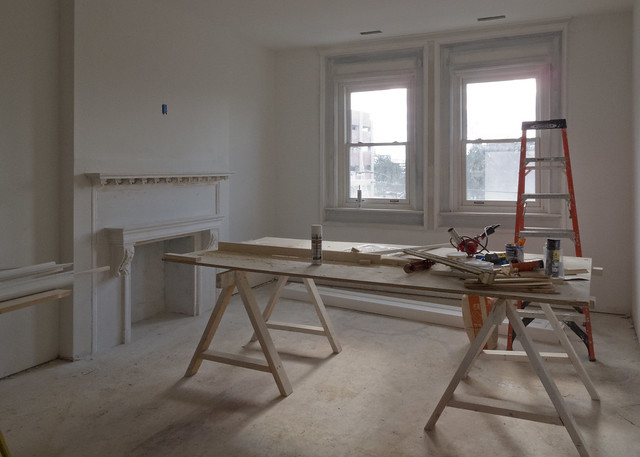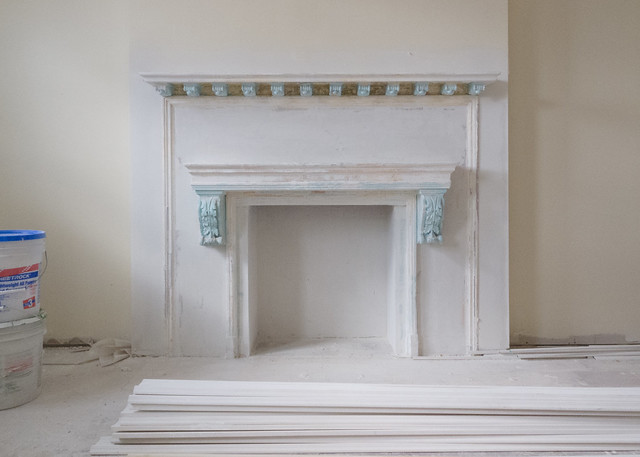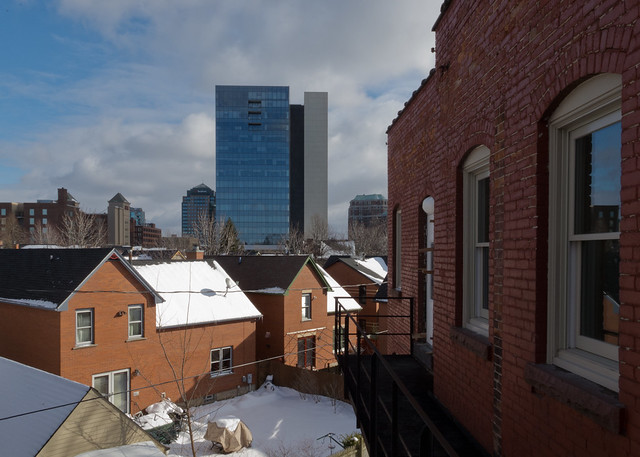The 1901 Beaux Arts-style Lackawanna Iron and Steel Company Administration Building (later known as the Bethlehem Steel Administration Building) is currently falling to the wrecking ball, despite the efforts of local citizens who have spoken out for its adaptive reuse. The Lackawanna Industrial Heritage Group (LIHG) has learned that Gateway Trade TURNED DOWN several offers of developers to take control of the property, after allowing them to tour the site. Mayor Geoffrey Szymanski refused to listen to the concerns of local citizens, from whom over 600 petition signatures were gathered.
He could have rescinded the City of Lackawanna's demolition order at any time, but instead, he maintained his entrenched position though the structure poses no threat to public safety. The building is eligible for both the State and National Registers of Historic Places, and was recently nominated as a “National Treasure” by the National Trust for Historic Preservation. LIHG members and the public will gather at the site to document this needless destruction, carried out by Zoladz Contracting and others.
Since the city has no preservation ordinance, though, the fate of the building rests solely in the mayor's hands. Recently, he declared in The Buffalo News, "it’s time we got more progressive. Bring down that building." LIHG sees the mayor's actions as anything but progressive, considering the lost potential this demolition signifies. It has been proven that preservation activities promote economic development, vitality, and sustainable urban growth. The young, educated people moving into Western New York and other historic areas have been shown to do so because of the wealth of history, unique architecture, low cost of living and heritage tourism this region offers.
"It is these attitudes that have caused Lackawanna to decline and make it all the more difficult for the city to ever rise up again," says Danielle Huber, chair of the LIHG. "We should be building on our strengths, not wiping them out." Dana Saylor, historian and member of Buffalo's Young Preservationists agreed, saying, “Adaptive reuse was economically feasible and would have been an excellent way to tie in all the waterfront investment happening along Lake Erie. Now, the area will suffer from the loss of potential that preservation activities would have brought to this site. Interesting redeveloped places like the Hotel@Lafayette and Steel Stacks in Bethlehem, P.A. are a draw!”
The Campaign for Greater Buffalo advised and assisted LIHG along the way, with Executive Director Tim Tielman, who said “Without a preservation ordinance in place, Lackawanna will continue to demolish its historic landmarks under the short-sighted policies of its government. The City must move to become a Certified Local Government, and institute a preservation board so what is happening to Bethlehem Steel, and what happened to St. Barbara's, will not befall other important places.”
 |
| Image courtesy of Buffalo News photographer: John Hickey |
 |
| 1980s photo of the administration building |
Citizens are encouraged to contact the Mayor of Lackawanna's office, and the building owners: Gateway Trade, get involved in future preservation activism, and consider a contribution to a local preservation organization of their choice. Members of the public, especially former employees of the company, are invited to witness the demolition this week, and speak out.
Quick Facts:
1899: Lackawanna Iron & Steel Co. began moving from Scranton, PA to Stony Point, NY in the Town of West Seneca
1900: Lansing C. Holden, AIA member, drew architectural plans for Administration Building
1901: Administration Building completed including rear laboratory, company town launched
1909: City of Lackawanna incorporated
1910: South wing in rear added
1919: North wing and northern 1/3 addition to facade added (approximately)
1922: Bethlehem Steel buys out Lackawanna Iron & Steel
1982: Bethlehem Steel closes Lackawanna plant
1983: Richard & Patricia Garman of R&P Oak Hill Construction purchase complex as “Gateway Trade”
2000: New Enterprise Stone & Lime in P.A./Detwiler family buy out Gateway Trade
2002: Coke production ceased at the site
_________________________________________________________________________________________________


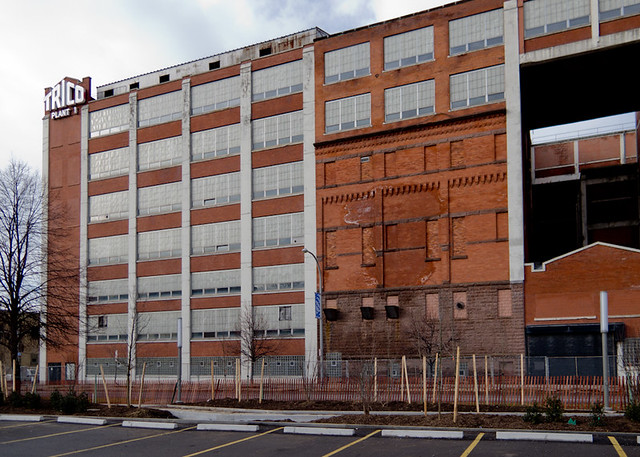

.jpg)





